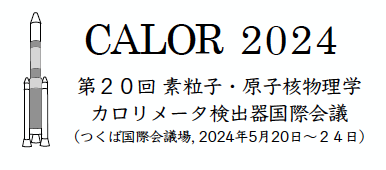Conveners
Future colliders 4
- Takahiro Fusayasu (Saga University (JP))
Future lepton collider experiments (FCC-ee and CEPC) require excellent hadronic energy resolution to exploit their advantages. The dual-readout calorimeter can satisfy the requirement by using two types of calorimeter signals, which have complimentary information about the shower development. The calorimeter design takes into account a range of different absorbers. We investigated the...
The Korean dual-readout calorimeter collaboration fabricated dual-readout calorimeter modules using several Cu forming prototypes such as 3D printing and Skiving.
All prototype modules were assembled to form an electromagnetic calorimeter whose depth was 25 $X_{0}$ and 2.5 Moliere radii.
This electromagnetic calorimeter was exposed to low-energy positrons ranging from 0.5 GeV to 5 GeV at T9,...
This work will present the full simulation and reconstruction development of a segmented crystal ECAL option for the IDEA detector, building upon previous 'proto-PFA' work previously simulated in Geant4 by M. Lucchini. The simulation has been implemented with the IDEA dual-readout and tracker packages within the latest key4hep framework, enabling a unified detector description and centralized...
In calorimetry, the poor hadronic energy resolution of non-compensating calorimeters is caused mainly by the non-Gaussian fluctuation of the electromagnetic component and that in binding energy loss. To remedy this situation, the dual-readout method was proposed and proved with beam tests for the last 20 years. The dual-readout calorimeter, a significant advancement in the field of calorimetry...
